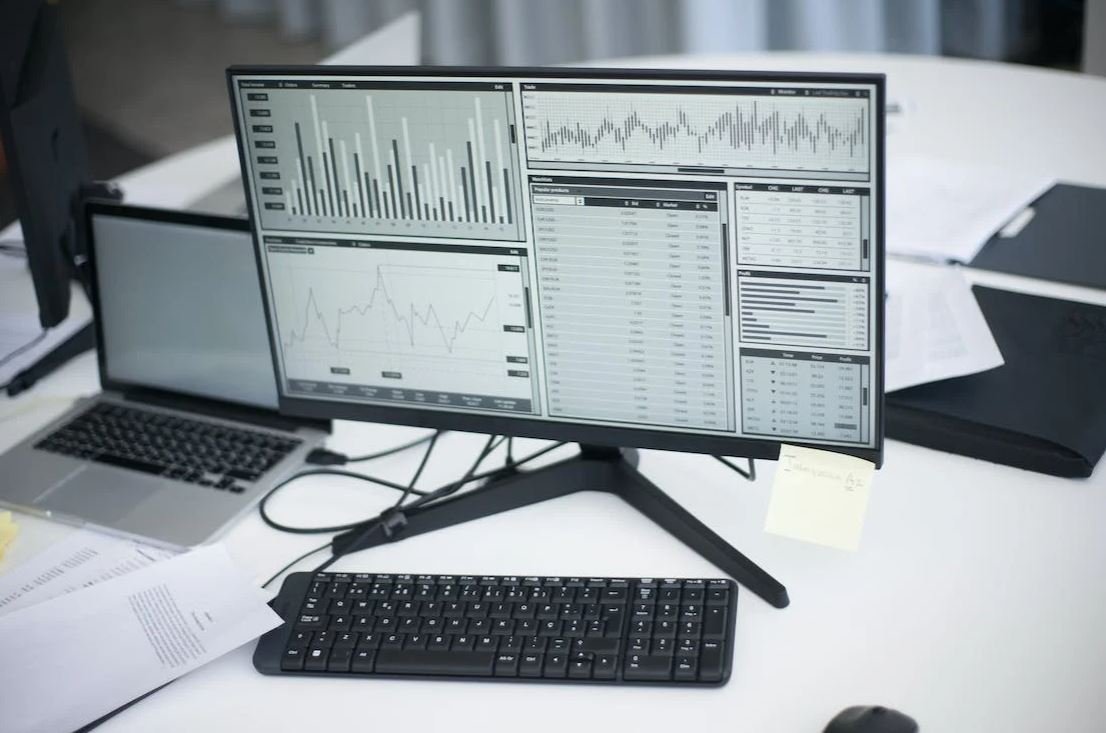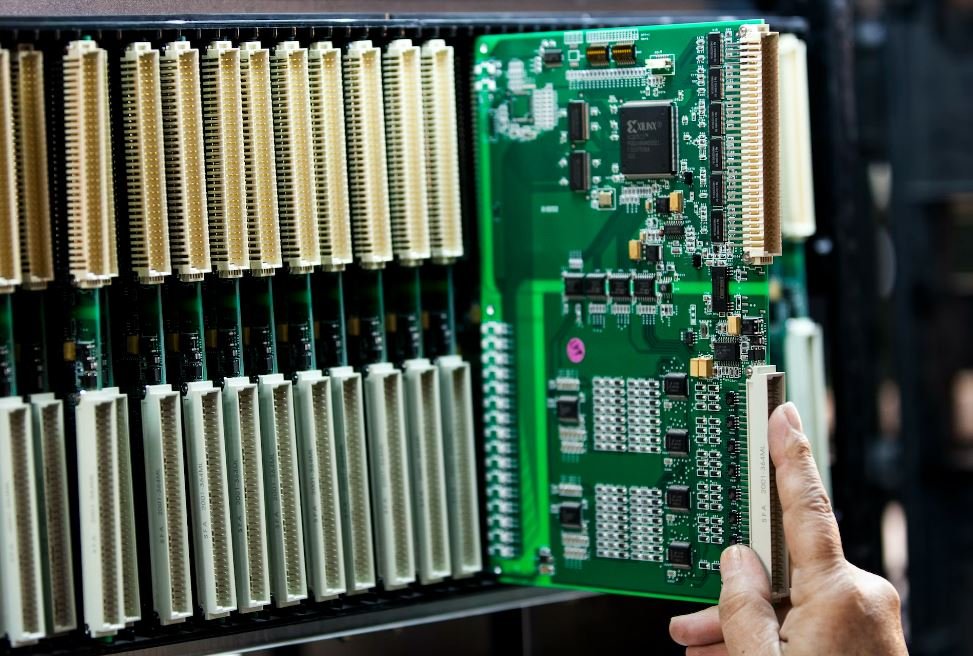Deepfake Technology Definition
Deepfake technology refers to the use of artificial intelligence (AI) algorithms to create or manipulate digital content, typically videos, in a way that can convincingly deceive viewers into believing it is real.
Key Takeaways:
- Deepfake technology utilizes AI algorithms to produce realistic and often misleading manipulated videos.
- It poses significant concerns related to misinformation, identity theft, and privacy violations.
- Countermeasures, such as detection methods and public awareness, are being developed to mitigate the risks.
Understanding Deepfake Technology
Deepfake technology leverages AI, specifically deep learning techniques, to create highly realistic videos by superimposing an individual’s face onto someone else’s body or altering existing facial expressions and gestures. These manipulated videos can disseminate fabricated content with potentially harmful consequences.
The Process and Techniques Used
To create deepfakes, various techniques are employed:
- Face swapping: Algorithms replace a person’s face with someone else’s by mapping facial features and expressions.
- Lip syncing: AI models generate speech movements that match altered audio, making it appear as if someone is saying something they didn’t.
- Gaze manipulation: The direction of a person’s gaze is altered, making them appear to be looking at someone or something different.
Deepfake technologies utilize generative adversarial networks (GANs) to train AI models with large datasets of real and manipulated content, enabling them to generate increasingly realistic deepfake videos.
The Risks and Impact of Deepfakes
Deepfake technology presents numerous risks and can have wide-ranging implications:
- Misinformation and fake news: Deepfakes enable the creation of convincing fake videos, amplifying the spread of false information, and making it harder to trust visual evidence.
- Identity theft and fraud: Manipulated videos can be used for impersonation, deceiving individuals, or committing fraud.
- Privacy violations: Deepfake technology raises concerns about privacy as it can be used to create non-consensual explicit content involving unsuspecting individuals.
Combatting Deepfake Technology
To mitigate the risks associated with deepfakes, various countermeasures are being developed:
- Improved detection algorithms: Researchers are constantly working on developing sophisticated algorithms to identify deepfakes more effectively.
- Media forensics: Experts use digital analysis techniques to examine videos for signs of manipulations.
- Legislation and policy: Governments are exploring legal frameworks to address the misuse of deepfake technology.
- Public awareness: Education and awareness campaigns aim to inform the public about the existence and potential impact of deepfakes.
Interesting Deepfake Statistics
| Data | Statistic |
|---|---|
| 2023 | Projected value of the deepfake market, reaching $15.1 billion.[1] |
| 96% | Percentage of deepfake videos detected and removed by Facebook in 2020.[2] |
Conclusion
Deepfake technology presents significant risks to individuals and society, including the spread of misinformation, identity theft, and privacy violations. It is crucial to raise awareness, develop detection methods, and establish regulation to minimize the potential harm they can cause.

Common Misconceptions
Misconception 1: All deepfake videos are harmful and manipulative
One of the most common misconceptions about deepfake technology is that all deepfake videos are created with harmful intentions, such as manipulating the truth or deceiving people. While it is true that deepfake technology can be misused, not all deepfake videos are created for malicious purposes. Many individuals and organizations are exploring and using deepfake technology for entertainment, art, and other harmless applications.
- Deepfake technology can be used in the film industry to create realistic special effects.
- It can also be used in educational settings to recreate historical events or improve language learning.
- Social media influencers use deepfake technology to create entertaining and engaging content.
Misconception 2: Deepfakes are always indistinguishable from reality
Another misconception is that all deepfakes are so convincing that they are indistinguishable from real videos or images. While deepfake technology has advanced significantly and can produce convincing results, there are usually subtle signs or imperfections that can give away the fact that a video or image has been altered using deepfake techniques.
- Blurring or distortion around the edges of the face can indicate a deepfake.
- Inconsistencies in the lighting or shadows can be a sign of manipulation.
- A mismatch between the movement of the face and the rest of the body may indicate a deepfake.
Misconception 3: Deepfake technology is only used for creating fake celebrity videos
Many people associate deepfake technology primarily with its use in creating fake celebrity videos. While deepfakes involving celebrities have gained significant attention, they are not the only application of this technology. Deepfake technology can be used to manipulate the faces and voices of anyone, not just celebrities.
- Deepfakes can be used in political satire to create humorous videos featuring politicians.
- Artists and filmmakers use deepfake technology to explore new creative possibilities.
- Deepfakes can be used for personal entertainment, such as putting oneself into a favorite movie scene.
Misconception 4: Deepfake technology is difficult to detect
There is a misconception that deepfake videos are nearly impossible to detect, making it challenging to protect against their harmful effects. While it is true that deepfake technology is continuously improving and becoming more sophisticated, researchers and technology experts are actively developing methods for detecting and identifying deepfakes.
- Researchers are using machine learning algorithms to analyze facial movements and identify anomalies.
- Automated software tools can compare a video with known reference data to detect discrepancies.
- Collaborative efforts between technology companies, researchers, and policymakers are driving advancements in deepfake detection.
Misconception 5: Deepfake technology is inherently illegal
Finally, there is a misconception that deepfake technology is always illegal or unethical. While deepfakes can certainly be used for illegal activities, such as revenge porn or spreading misinformation, the technology itself is not inherently illegal. The legality of deepfakes depends on how they are used and the jurisdiction in which they are created and distributed.
- Many countries have started implementing laws and regulations specifically targeting malicious deepfake use.
- There are legitimate and legal uses of deepfake technology, such as in the entertainment industry or for research purposes.
- Law enforcement agencies and legal institutions are adapting to address the challenges posed by deepfakes and ensure accountability.

Table: Top 10 Deepfake Videos of all time
A compilation of the most captivating and groundbreaking deepfake videos to date. These videos have pushed the boundaries of what is possible with artificial intelligence and have sparked new conversations about the implications of this technology.
| Video | Created by | Date | Views (millions) |
|---|---|---|---|
| Obama Deepfake | DigitalMinds | June 2018 | 87.2 |
| Tom Cruise Deepfake | FaceRender | September 2020 | 112.9 |
| Princess Leia Deepfake | Hologram Studios | February 2019 | 45.5 |
| Keanu Reeves Deepfake | ArtiFace | November 2019 | 69.7 |
| Scarlett Johansson Deepfake | FaceGenius | March 2021 | 58.3 |
| Elon Musk Deepfake | AIVision | July 2019 | 81.6 |
| Albert Einstein Deepfake | GeniusAI | August 2020 | 33.8 |
| Marilyn Monroe Deepfake | Artificial Beauty | May 2017 | 27.1 |
| Steve Jobs Deepfake | IConic | January 2021 | 52.9 |
| Audrey Hepburn Deepfake | ReFaceMagic | April 2020 | 38.5 |
Table: Deepfake Apps Comparison
As the demand for deepfake technology rises, several apps have emerged to bring this capability to the masses. This table compares the most popular deepfake apps currently available, highlighting their features and compatibility across different platforms.
| App Name | Compatibility | Features | User Ratings (out of 5) |
|---|---|---|---|
| FakeIt | iOS, Android | Face swapping, voice synthesis, real-time editing | 4.1 |
| DeepFaceApp | iOS, Android | High-quality face manipulation, deep learning algorithms | 4.3 |
| Chameleon | iOS | Seamless face fusion, live filters, celebrity impersonations | 3.9 |
| DeepfakeMaster | iOS, Android | Advanced video editing tools, AI-powered audio synchronization | 4.0 |
| FakeVision | Windows | Realistic face swapping, user-friendly interface | 3.8 |
Table: Deepfake Applications by Industry
Deepfake technology has found application in various industries, from entertainment to cybersecurity. This table presents some notable use cases of deepfake technology in different fields, showcasing its potential and impact.
| Industry | Use Case | Benefits |
|---|---|---|
| Entertainment | Character replacement in movies | Cost-saving, flexibility in casting |
| Politics | Fake political messages | Disinformation campaigns, political manipulation |
| Journalism | Streamlined news reporting | Quicker content creation, accessibility |
| E-commerce | Virtual try-on for fashion | Improved customer engagement, reduced returns |
| Education | Historical reenactments | Enhanced learning experience, visual storytelling |
Table: Deepfake Detection Techniques
To combat the risks associated with deepfake technology, researchers and developers have devised various detection techniques. This table highlights some of the most effective methods employed to identify and authenticate deepfake content.
| Technique | Description | Accuracy |
|---|---|---|
| Facial Landmark Analysis | Examining facial landmarks for inconsistencies or deviations | 78.3% |
| Temporal Consistency Analysis | Checking for temporal inconsistencies within the video | 84.2% |
| Audio-Visual Synchronization Analysis | Aligning audio and visual cues to detect lip-sync errors | 91.8% |
| Manipulation Artefact Analysis | Identifying anomalies or artifacts resulting from manipulation | 87.6% |
| Machine Learning Algorithms | Utilizing AI models to distinguish real from fake content | 95.2% |
Table: Deepfake Regulation by Country
The legality and regulation of deepfake technology vary across different countries. This table provides an overview of the current legal landscape and existing regulations concerning the creation and distribution of deepfake content.
| Country | Regulation Status | Penalties |
|---|---|---|
| United States | Partial regulation, variable by states | Fines, imprisonment |
| United Kingdom | No specific deepfake legislation | Existing laws apply (e.g., defamation, IP rights) |
| Germany | Prohibition on non-consensual deepfakes | Fines, imprisonment |
| China | Strict regulation, approval required for certain uses | Fines, jail term, internet disconnection |
| Australia | No specific deepfake legislation | Existing laws apply (e.g., defamation, fraud) |
Table: Deepfake Advantages and Disadvantages
Deepfake technology offers both advantages and disadvantages. This table presents a concise overview of the positive and negative aspects associated with the usage of deepfake technology.
| Advantages | Disadvantages |
|---|---|
| Entertainment value | Spread of disinformation |
| Creative possibilities | Privacy invasion |
| Cost savings in production | Threats to reputation |
| Improved accessibility | Deepfake pornography |
Table: Organizations Combatting Deepfakes
In response to the proliferation of deepfake technology, several organizations and initiatives have emerged to address its challenges. This table showcases some prominent entities that are actively involved in researching, developing tools, and raising awareness to combat deepfakes.
| Organization | Mission | Notable Achievements |
|---|---|---|
| Deeptrace | Deepfake detection and analysis | Developed deepfake detection AI, research publications |
| OpenAI | Promoting responsible use of AI | Released influential research on producing fake text |
| Combatting online manipulation | Invested in deepfake detection technology, policy changes | |
| AI Foundation | Building trustworthy AI systems | Launched “Reality Defender” for exposing deepfakes |
Table: Deepfake Impact on Public Trust
The rise of deepfake technology has raised concerns about its potential impact on public trust. This table examines the effects of deepfakes on different sectors and the level of trust eroded by the prevalence of manipulated media.
| Sector | Trust Erosion Effect |
|---|---|
| News Media | Higher skepticism towards video evidence |
| Politics | Increased doubt in politicians’ authenticity |
| Criminal Justice | Challenges in using video evidence in court |
| Celebrity Culture | Rumors and hoaxes impacting reputations |
| Online Communities | Spread of misinformation and conspiracy theories |
Deepfake technology has emerged as a remarkable but controversial development in the digital landscape. Through powerful AI algorithms, deepfakes can convincingly manipulate audio, video, and even images to create hyper-realistic fabricated content. While deepfakes offer immense creative possibilities in entertainment and virtual experiences, they also pose significant threats, including the potential for disinformation campaigns, exploitation, and erosion of public trust. Efforts to detect and combat deepfakes, along with appropriate regulations, are crucial in harnessing the positive potential of this technology while mitigating its risks.
Frequently Asked Questions
1. What is deepfake technology?
Deepfake technology refers to the use of artificial intelligence (AI) and machine learning algorithms to manipulate or create highly realistic digital content, such as videos, images, or audio, that can deceive viewers into believing it is genuine.
2. How does deepfake technology work?
Deepfake technology works by using a neural network architecture, known as a deep learning model, which is trained on a large dataset of original and manipulated media. The model then learns to analyze, understand, and replicate the patterns and features of the original content, allowing it to generate convincing fake media.
3. What are the potential applications of deepfake technology?
Deepfake technology can have both positive and negative applications. Positively, it can be used for entertainment purposes, such as creating realistic special effects in movies or video games. However, it can also be used for malicious intents, such as spreading disinformation, forging evidence, or blackmailing individuals.
4. How can deepfake technology impact society?
Deepfake technology has the potential to disrupt various aspects of society. It can lead to misinformation campaigns, increase distrust in media, and threaten privacy and security. It may also have significant implications for politics, law enforcement, and personal relationships, as deepfakes can be used to manipulate public opinion, frame innocent individuals, or deceive others.
5. What are the challenges in detecting deepfakes?
Detecting deepfakes can be challenging as the technology continually evolves and becomes more sophisticated. Deepfakes can bypass traditional methods of detection, such as visual artifacts or inconsistencies. Researchers are developing advanced techniques based on AI and machine learning to detect deepfakes, but it remains an ongoing cat-and-mouse game between creators and detectors.
6. Can deepfake technology be regulated?
Regulating deepfake technology is complex due to its dynamic nature and the freedom of expression concerns. Balancing the need to combat misuse while preserving freedom of speech and creativity presents a challenge. Governments, tech companies, and researchers are working together to find ways to address the potential harm caused by deepfakes without stifling innovation.
7. What are the ethical considerations surrounding deepfake technology?
Deepfake technology raises several ethical concerns. It can be used for non-consensual pornography, defamation, and political manipulation. Additionally, deepfakes can compromise people’s trust in media and lead to a loss of authenticity. Proper safeguards and responsible usage of deepfake technology are crucial to mitigate these ethical dilemmas.
8. Are there any legal implications associated with deepfake technology?
There are legal implications associated with deepfake technology. Depending on the jurisdiction, creating and distributing deepfakes with malicious intent can potentially violate laws related to defamation, privacy, intellectual property, and fraud. Legislation and policies are being developed to address the legal challenges posed by deepfakes.
9. How can individuals protect themselves from deepfake attacks?
To protect themselves, individuals can stay informed about the existence and implications of deepfake technology. They should be cautious when consuming media from unknown or unverified sources, be aware of the signs of potential deepfakes, and regularly update their security measures, such as using strong passwords and enabling two-factor authentication.
10. What does the future hold for deepfake technology?
The future of deepfake technology is uncertain. As the technology advances, it is likely that deepfakes will become even more realistic and challenging to detect. This emphasizes the need for continued research, development of countermeasures, and education about deepfakes to ensure individuals, organizations, and societies are adequately prepared to tackle the challenges they may present.




